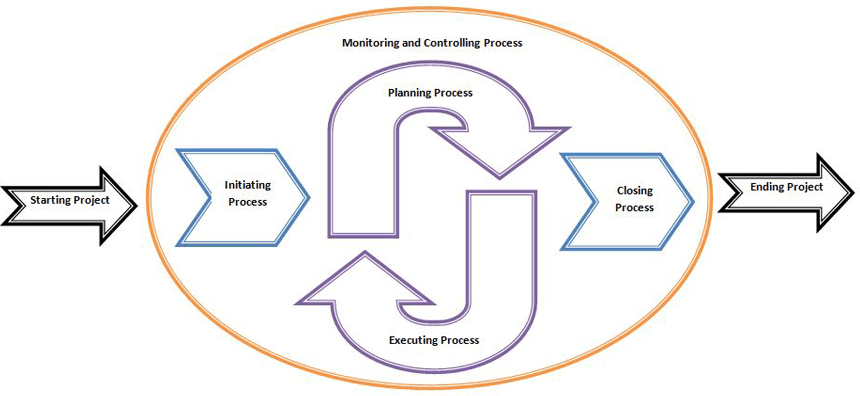

Have you ever played ball with a kid? The best fun ever, right? Well, only if both of you know the basic rule – before throwing the ball, you should make sure the other one is in the position to catch it.
The same is true for project handover. You don’t pass the project on to another manager or a client and wish them good luck. You take the time to prepare for the handover, do it properly, and ensure successful completion.
In project management, complicated processes can get out of control and turn into a mess; that’s why project handover is a big milestone in your diary and requires your full attention.
From early planning all the way through to handover and closeout, project managers have to deal with a lot of documentation (and quite rightly so). Overseeing this process in a professional manner is an absolute must.
In this comprehensive guide, you’ll dive deep into the concept of project handover, learn about the types, stages, and essentials of it, discover the best practices, and get a checklist to use for your next project.

Project handover is the point in the project management lifecycle when the completed tasks are being transferred to the deliverable owner. It marks the completion of delivery and the start of the closure stage of your project.
Basically, the project goes from the Project Manager to the Operational Manager (sometimes referred to as an Integration Manager). Hence the description of project handover as transition from design to use.

At first sight, this may sound simple enough. However, you should spend time clarifying what this definition means in your particular context.
Be careful. A lack of certainty around the definition can be detrimental to the project’s success. The crucial part is to agree – in advance – how your team and partners understand project handover and when the project is considered to be done. You should also get clear on what is being handed over – ownership, operational responsibility, management, continuity, knowledge, benefits realization or anything else. Make sure the project management plan gives all the answers by outlining everyone’s responsibilities and aligning everyone’s efforts to a common goal.
Moreover, if we view projects from the point of view of benefits delivery, handover is only the start, not the end. A good project handover is when it does what you all agreed it would, and the client gets what they’ve paid for. Here’s an example: projects that deliver a technical solution, but don’t work as intended, are a failure because they simply don’t work for the end users.
Although the overarching definition is that project handover is the transition of information and responsibility from one to another, project handover may refer to different schemes in different industries and situations.
In construction, it can be the completion of a building or the end of the first year’s warranty period of the building. In IT and software development, project handover might be when members of the project team are no longer involved in the project and you’ve transferred it to another company or a client. Some teams can define it in terms of timing – when all requirements and tasks are signed off as complete. In certain contexts, it might even be when the benefits have been delivered to the end user.
With all this diversity, it’s important to have an agreed position between all parties; otherwise, you’re all aiming for completely different targets.

As with all processes, the project handover can be viewed and discussed in terms of phases – before, during, and after. The following model helps us to split the entire process into three stages: pre-handover, handover, and post-handover.
This is the preparation stage when you specify all details of the project handover. Several steps can be outlined here:
Step 1: Design the transition plan. Poor planning in project management can have damaging results, so divide the handover process into manageable parts and make a checklist of your transition components.
Step 2: Clarify everyone’s roles in the project handover process, including the ones who will be involved in the process from the recipient side.
Step 3: Set a deadline when the handover should be completed and communicate it to all parties involved.
Step 4: Create a communication plan that outlines who communicates which information to whom and when.
Step 4: Agree upon deliverables required at handover and design end-of-job documentation. Note that the end-of-job documentation needs to be meaningful and consistent to the owner.
Time for the project handover.
Step 1: Conduct a handover meeting to discuss any necessary details and updates after the first stage is completed. Define what is actually handed over.
Step 2: Have knowledge-sharing sessions. Knowledge shouldn’t be transferred during lunch breaks; you need pre-planned meetings to answer questions and provide clarifications as needed.
Step 3: Transfer the ownership. Provide access to documentation and all information needed, including accounts, credentials, requirements, as well as third-party services and tools.
Step 4: Run a quality check before you say, “We’re done.”
Step 5: Project handover sign-off. Congratulations! It’s time for handshakes and signatures!
Post-handover is the follow-up or the support stage to make sure the end user has received all deliverables. The project is now in a live setting. At this stage, you sustain what you’ve created by making sure all snags are taken care of. As a rule, this stage stretches from one to six months.
Step 1: Carry out a project performance review.
Step 2: Support the end user. This can be either on-site or off-site support, depending on the industry you’re operating in or the type of project you’ve delivered.
Step 3: Do monitoring and course-correcting. Explain what the flow is and make suggestions of how people should make use of it. If any issues pop up after observations, update documentation as needed.
Step 4: Collect stakeholders’ feedback. Keep this data organized; you’ll surely need to consult it sooner or later.
Sounds overwhelming? No worries. You don’t need to reinvent the wheel. Past failures have already taught industry practitioners useful information.

The handover of your next project will go smoothly and without excessive stress, if you’re aware of the possible pitfalls and best practices. Here’s a comprehensive overview of the lessons learned the hard way.
First, let’s have a look at the definition of a project as formulated by the Association of Project Management:
“A project is a unique, transient endeavour, undertaken to achieve planned objectives, which could be defined in terms of outputs, outcomes or benefits.”
As you can see, the heavy emphasis is placed not on the effort part but on the outputs, outcomes and benefits projects deliver to the end user. When we view project management from this perspective, we can make a loud and clear statement: “A project is considered to be failed if it isn’t delivering the promised benefits.”
The same is true about project handover. Without a benefits-based approach to the handover process, your team is mainly concerned about getting this project done and rushing on to the next one. In this case, there is little attention and focus on real-life execution.
Therefore, project handover shouldn’t be treated as a date. You should take the time to clearly establish the benefits and prepare the client for using the product and handling any issues that may pop up.
What’s one of the most frequent reasons for failed projects? Perhaps the project team doesn’t deliver on their promise? Or maybe the client doesn’t properly understand what they want? The shortest answer will be – it’s a mix.
Avoid vague and general statements. Not being clear about the outputs can jeopardize the project’s overall success. Note that the benefits should not only be established but also communicated to all stakeholders at the outset. If the project hasn’t been delivered and the criteria to measure success haven’t been established initially, both the project team and the client are to blame.
By the way, it’s the responsibility of the project manager to create a balance between delivering project objectives on the one hand and ensuring the benefits realization on the other. Therefore, a wise decision would be to have an assigned team member measure the criteria and report to the project manager on a regular basis.
Clients come in all shapes and sizes, so understanding the many different types of clients is essential.
You’ll meet clients who expect you to take their hand and guide them every step of the way. You’ll come across those who are resistant to change and lack the readiness to experiment. You’ll have to handle know-it-all clients who have all answers before you tell them what works and what should be avoided.
Take the time to learn more about the challenges they have and the solutions they’re seeking. Above all, find the answer to one critical question upfront: “What does a good transition mean to my client?”
Project handover is not something one and done. It’s a transition, not a single date.
Most project management methodologies will place handover within the project integration and project closure stages. That’s why in the case of big projects, teams usually plan for multiple handovers rather than a single release.
To keep everything under control, consider planning mini handovers throughout the project implementation. You might even set time for quick celebrations to keep the team’s spirit up!
Put data in a shared environment to enable just-in-time access to the information. Make sure all documentation is in a usable and searchable format. This will hinder doing things twice and save everyone precious time.
Pro tip: documentation must be written for the end users. Yes, it may cause inconvenience and force you to take a fresh approach to your traditional way of creating documentation. But for written data to support knowledge transfer, it needs to be meaningful, applicable, and relevant to your end users.
Things happen. Your team member may get sick or quit unexpectedly. Put every effort to keep the most valuable folks on board, but if it’s not an option, you should get your priorities clear. Remember the golden rule: if you can’t maintain the people, maintain the knowledge. By the way, this is why it’s important to have the requirements written in as much detail as possible.
That’s it. You now have a detailed overview of the project handover stages and know the essentials you should try to put into practice.

Learning how to hand over a project effectively can take a hard toll on you. Ready for expert tips to help you create a successful project handover plan? Let’s get started!
Remember that at the end of the day, good performance on a project is likely to lead to referrals and repeat work. Successful handover is a good indicator that more prospects are going to seek your partnership and hit the purchase button.

Grab this checklist to guide you throughout the project handover process, keep everyone informed, and help your team enjoy a smooth transition.
One final note before we wrap up. Don’t forget to customize the checklist and add any project-specific items.
The cutting of a ribbon is a heart-warming ceremony, and you should try your best to reach that milestone with a proud smile.
In project handover, you can’t merely pass off the keys and let others handle the rest. Your handover plan should be well thought out in advance because hurried steps increase the likelihood of omitting vital details. Those who take over the project should be in the best position to continue the work or put the results to use (very much like the kid who should catch the ball during the game).
Keep your team and your clients happy by creating a staggering success story. Happy clients will come back for more projects and will keep you busy with new and interesting endeavors.